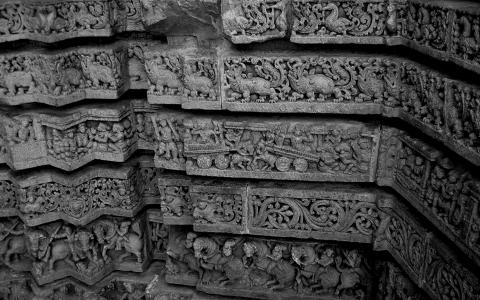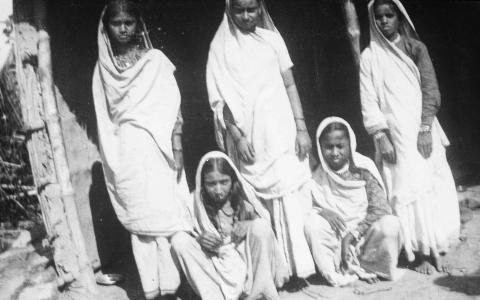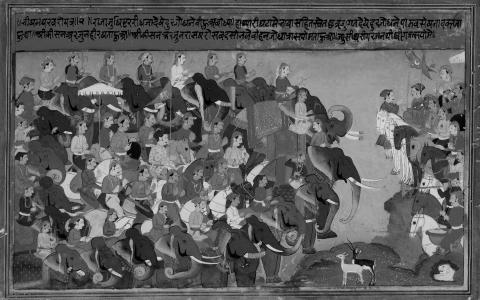September 2016

11
ऋत means 'as is,' सत्य also means 'as is.' As is comprehending the fact or object in its true form. To convey the same meaning why is there usage of two words ऋत and सत्य? Here the two of them serve different purposes. ऋत is the internal sprout of thought without the compulsion or urge by others. This means inner radiance, inner vision. This is true and natural. But this alone won't suffice for a man's conduct. This needs confirmation at many...

One day, sometime during 1905-06, at about 10 in the morning, my grandfather’s brother was sitting at the veranda of our house, chatting with someone. At that time, a man came there, stood at a distance, and spoke in Telugu in a soft voice, “Right now, if I requested you for some food, would it be inconvenient?”
That man must have been 50 or 55 years old. He had a copper vessel in his hand and had covered himself with a quilt. He wore neither a...

In both the Vedas and the Puranas we can see a lineage of seers and kings. Again and again we see a reference to the panchajana in the Vedas; it is a reference to the five tribes (or clans) – यदु, द्रुह्यु, तुर्वष, पुरु, and आनु. The group that primarily ruled our country are the Purus. The Yadus and the Turvashas were under them. The Aanus and Druhyus went to various parts and settled there, creating colonies. In summary, we can say that these...

Sukanta Bhattacharya (1926-1947) is counted as one of the great Bengali poets along with Rabindranath Tagore, Jibanananda Das, and Kazi Nazrul. For someone who died at twenty, that is quite something. Many of his poems have sociopolitical undertones but are romantic at the core.
Suakanta_Bhattacharya-199x300_2.jpg
Sukanta Bhattacharya
This is a small poem written by Sukanta in what seems to have been utter...

Ananda Coomaraswamy is one of the little-known figures of India. Which is baffling because a vague estimate of his works runs into more than 15,000 pages. It is all the more baffling because his range of subjects is almost beyond belief and his grasp of their intricate nuances is staggering.
It is almost impossible to slot Coomaraswamy into a single category for he was all of them: philosopher, historian, art historian, polyglot, cultural...

The basic idea of the Gita was to convince Arjuna to fight the war and kill his enemies. Krishna tells Arjuna without mincing any words that he has to face his enemies and march ahead. And in the course of this persuasion, he uses various lines of argument (see for example, BG 2.31-33, 11.34). But this is not an empty exhortation. Krishna himself has killed others. He has killed his own people too. He killed his own maternal uncle Kamsa because...

If you grew up in India or if you were associated with Indian culture in any form – literature, music, dance, or films – you would have heard the word dharma. Most Indian languages have this word as is or at least have the concept (for example, in Tamil, we use the word aram, which is similar to dharma).
Dharma is the universal principle that sustains and supports everything. It is the mechanism of Nature. It is a universal Virtue. It is Truth...

In the dharmashastras, there are sections exclusively dedicated to raja-dharma that are both specific and elaborate. In the smrtis of Manu, Yajnavalkya, Narada and others, as well as the dharma-sutras of Apastamba, Bodhayana, Gautama and others, there are thousands of pages dedicated to raja-dharma. All those deal with how governance should be in a manner that is transparent and is in the best interests of the people, which are aligned to the...
